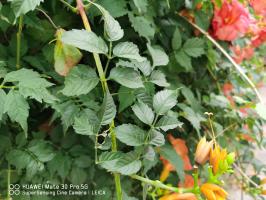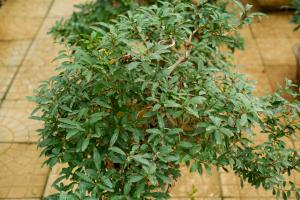Can You Use Hot Glue on a Pot for Plants?
When it comes to gardening, one common question people have is whether or not they can use hot glue on their plant pots. While hot glue is a versatile adhesive that can be used for a variety of purposes, it may not be the best choice when it comes to planters. Here, we'll take a closer look at the pros and cons of using hot glue on plant pots.
The Pros of Using Hot Glue on Plant Pots
One of the main advantages of using hot glue on plant pots is that it dries quickly and sticks firmly. This can be a huge benefit if you need to make quick repairs or modifications to your planters. Additionally, hot glue is easy to apply and can be used on a variety of surfaces, making it a versatile adhesive for any gardener to have on hand.
The Cons of Using Hot Glue on Plant Pots
While there are benefits to using hot glue on plant pots, there are also several drawbacks. Perhaps the biggest downside to using hot glue on planters is that it may not hold up well over time. Hot glue is not designed to withstand exposure to moisture, sunlight, or temperature changes, which can cause it to lose its adhesive properties and start to break down. This can be especially problematic if you're using hot glue to attach heavy items, such as decorative stones or ornaments, to your planters.
Another disadvantage of using hot glue on plant pots is that it can be messy and difficult to remove. If you ever need to move or replace a plant in your pot, you may find that the hot glue has hardened and is difficult to remove without damaging the pot or the plant itself.
Alternatives to Using Hot Glue on Plant Pots
If you're looking for a strong and durable adhesive for your plant pots, there are a number of alternatives to hot glue that may be better suited to your needs. One popular option is epoxy glue, which is designed to withstand exposure to moisture and temperature changes. Epoxy glue can be used to attach heavy items to your planters, and it dries to a hard, waterproof finish that can stand up to the elements.
Another option is silicone adhesive, which is also waterproof and can be used on a variety of surfaces. Unlike hot glue, silicone adhesive remains flexible even after it dries, which makes it a good choice for attaching items to plant pots that may experience frequent movement or vibration.
Conclusion
So, can you use hot glue on a pot for plants? While it is technically possible to use hot glue on planters, it is not necessarily the best choice. Hot glue may not hold up well over time, and it can be messy and difficult to remove. Instead, consider using an alternative adhesive, such as epoxy glue or silicone adhesive, that is designed to withstand exposure to moisture and temperature changes. With the right glue, your plant pots will be strong, beautiful, and long-lasting.

 how many times do yo...
how many times do yo... how many planted tre...
how many planted tre... how many pine trees ...
how many pine trees ... how many pecan trees...
how many pecan trees... how many plants comp...
how many plants comp... how many plants can ...
how many plants can ... how many plants and ...
how many plants and ... how many pepper plan...
how many pepper plan...





























